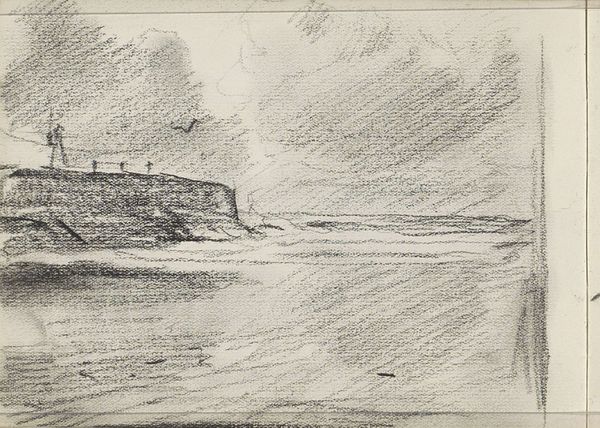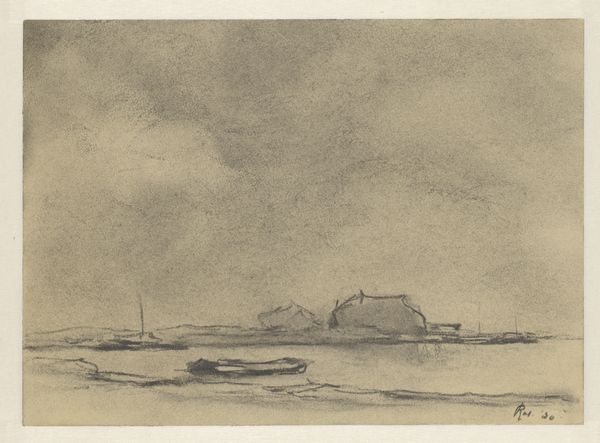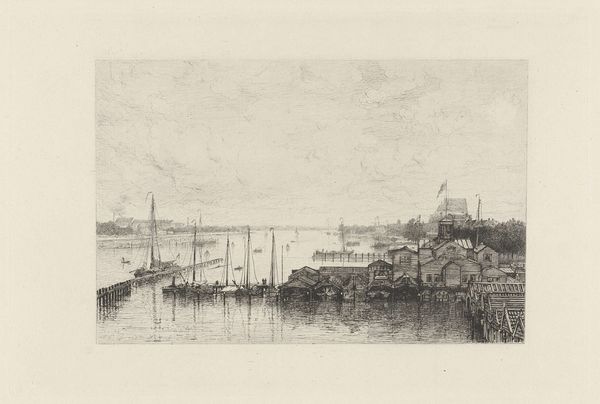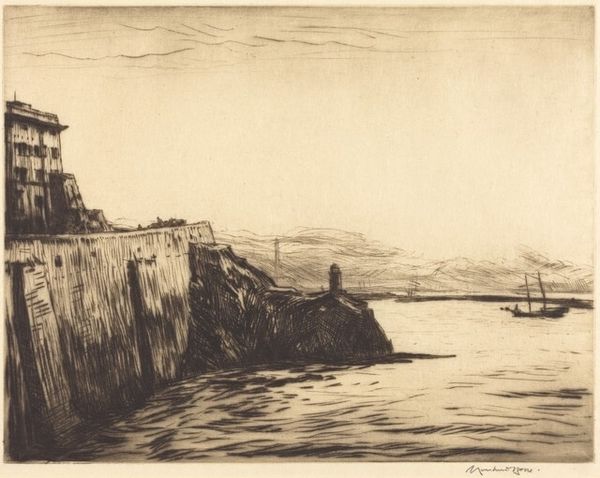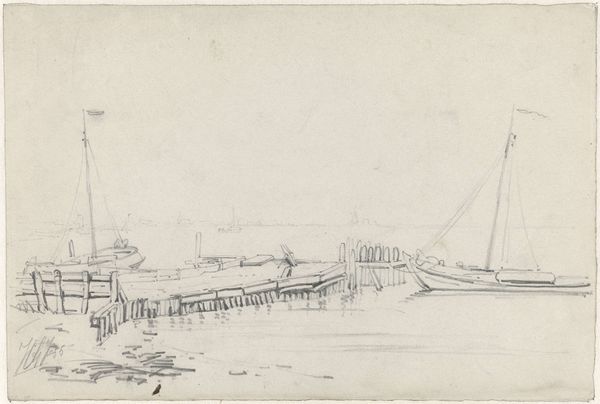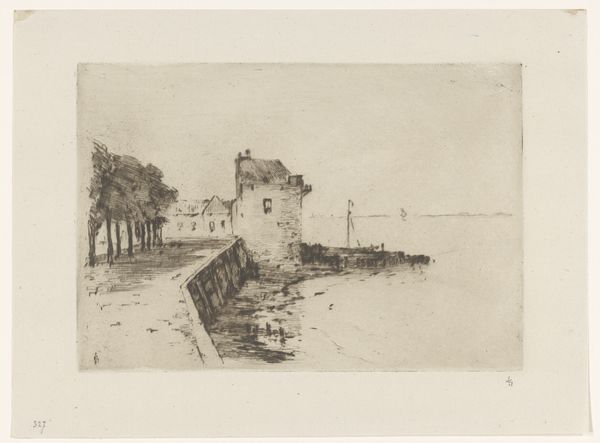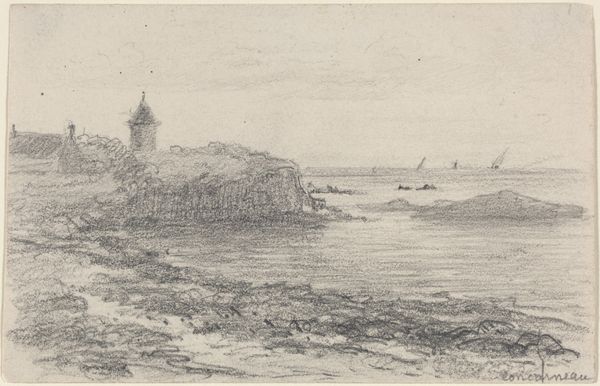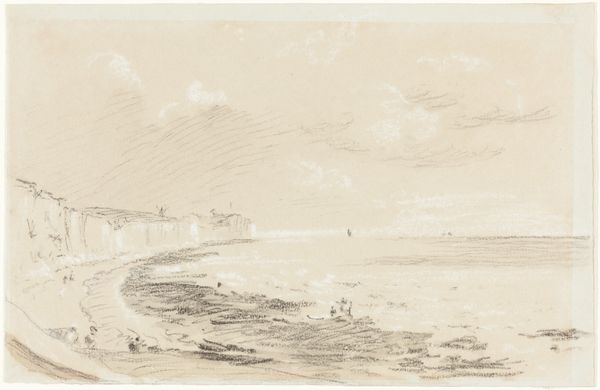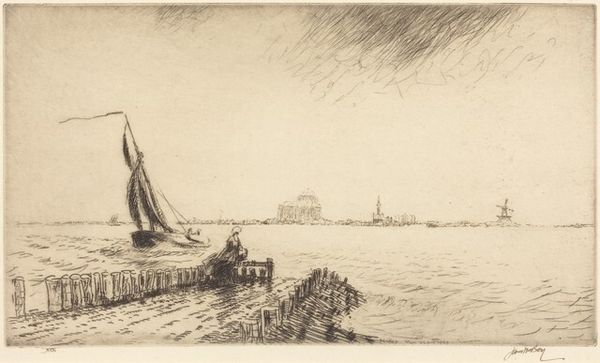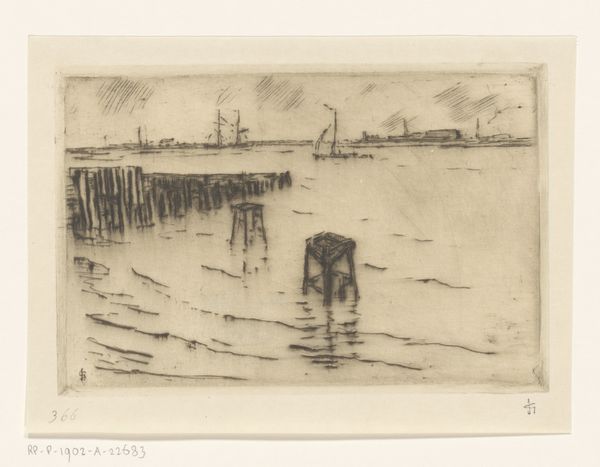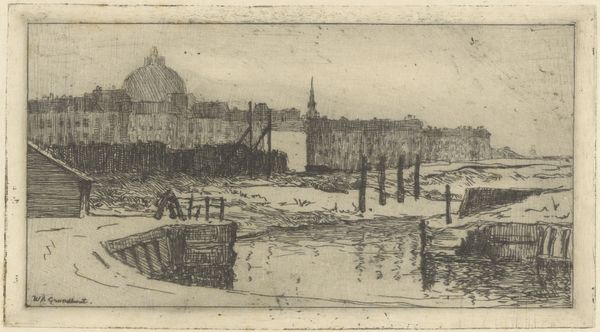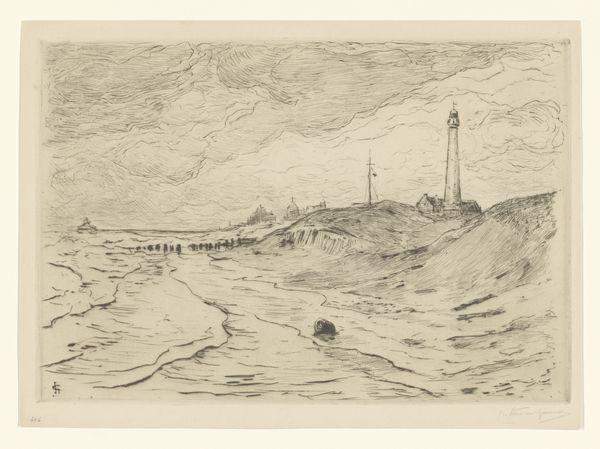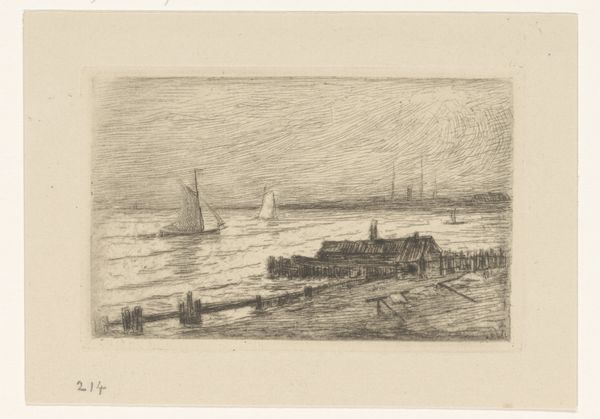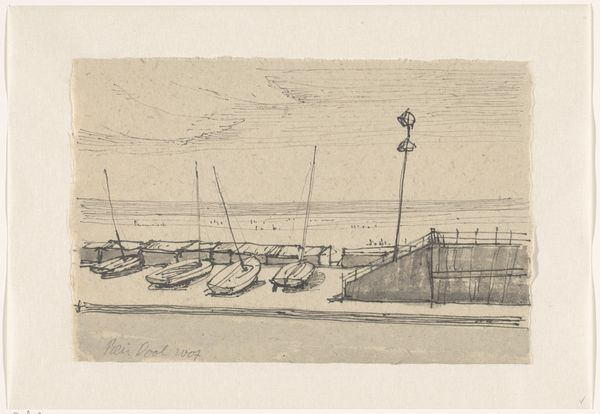
drawing, pencil
#
drawing
#
landscape
#
etching
#
pencil
#
cityscape
Dimensions: height 225 mm, width 350 mm
Copyright: Rijks Museum: Open Domain
Curator: Looking at this drawing by Adolf le Comte, entitled "Wallen te Vlissingen" and dating roughly between 1860 and 1921, my first thought goes to its textural simplicity. The visible pencil strokes create a sense of rawness, an immediacy in its depiction of the Vlissingen seawall. Editor: It’s interesting how the artist chose pencil; a readily available, inexpensive material. The image evokes the industrious character of a port city, but the choice to work with accessible material elevates the everyday lives of laborers and sailors and hints at the artistic process behind capturing that social reality. Curator: Indeed. Le Comte likely produced this en plein air, documenting the ongoing development of Vlissingen’s infrastructure. It underscores the importance of such spaces in 19th and early 20th century Netherlands, which was a vital period of modernization and expansion of the harbor network. Editor: Notice how the linear elements—the palisades in the foreground, the dock extending into the sea—lead your eye, while the textures capture the aging stone fortifications. This subtle approach challenges our conventional understandings about the representation of coastal engineering during that period. Was the process of image production also meant to underscore Dutch technological and economical prowess? Curator: Potentially. But its monochromatic palette suggests more of a study— perhaps a preparatory sketch for a more polished painting, destined for exhibition in a more established salon. How an image of the Vlissingen harbor moved between studios and public galleries shaped perceptions of the space both within and outside the community. Editor: Agreed. Looking at this landscape study allows one to reflect upon Dutch society at a moment of heightened maritime activity. The drawing offers insights into Le Comte's relationship to artistic labor. Curator: And it gives us, the viewers, today a moment to contemplate a long-gone era, shaped by the material remnants visible in a single pencil stroke.
Comments
No comments
Be the first to comment and join the conversation on the ultimate creative platform.
